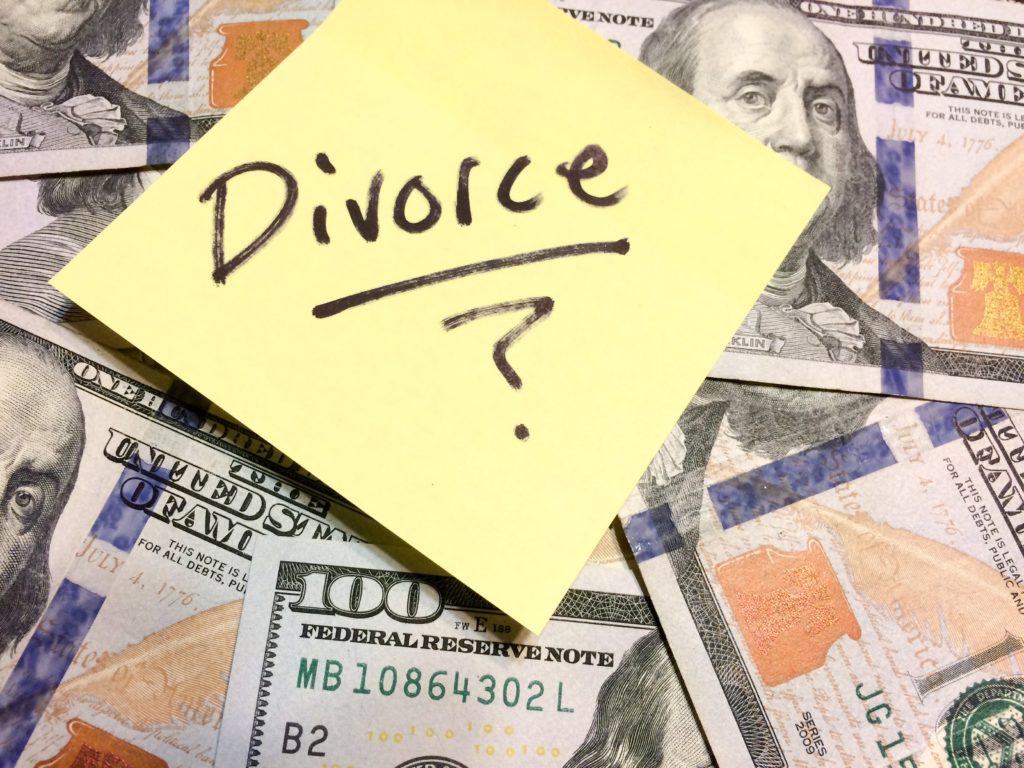There seems to be an ongoing consensus in the United States that divorce rates are on the decline – something that is also reflected in California divorce statistics. Although the figures stated from different sources sometimes vary, there is a general agreement that Gen Xers and millennials are delaying marriage, and divorce rates within these generations have also been falling.
But before delving deeper into the facts about California divorce statistics, we’re going to discuss some facts about divorce, countrywide divorce rates and the reasons behind the changing trends.

Divorce in America – An Overview
Divorce or the legal dissolution of a marriage is one of the most stressful life events anyone can ever go through. No matter a couple’s life situation, divorce is known to wreak havoc on mental, physical and financial health.
But why do people divorce?
Many studies have already been done as to what factors lead to divorce. The most common reasons cited include:
- Marital infidelity
- Frequent fighting or conflict
- Lack of commitment
- Immaturity or marrying too young
- Differing goals, priorities, lifestyles and values
- Inequality in the relationship
- Substance abuse or addiction
- Domestic violence or abuse
There are also risk factors that can put a strain on a couple’s marriage and lead to a higher likelihood of divorce:
- Limited education
- Inadequate income
- Premarital pregnancy and childbearing
- Lack of religious affiliation
- History of parental divorce
American Divorce Rates by State
For a really long time, the United States divorce rate was pegged at about 50%; however, as far back as 2014, this figure has been challenged, with sources saying the rate is about 41% for first marriages ending in divorce. That same year, the New York Times published a graph detailing how divorce rates increased in the 1970s and 1980s, and then started to decline in the 1990s and 2000s.
Last year, the physical, psychological, social and financial toll of the COVID-19 pandemic prompted experts to predict a rise in divorce rates. However, it was found that divorce rates in the U.S. have been on a downward trend for the past decade.
This was revealed in U.S. Census Bureau data based on their 2019 American Community Survey one-year estimates. Back in 2009, for every 1,000 women aged 15 and older, 9.7 new divorces occurred. In 2019, this figure was down to 7.6.
The same survey revealed that the rate of marriage also decreased – from around 17.6 new marriages for every 1,000 women aged 15 and older back in 2009 to 16.3 new marriages in 2019.
Although the data used aren’t the same, the decline in divorce and marriage trends is reflected in CDC data from the year 2000 to 2019.
The CDC data shows that back in 2000, there were 944,000 divorces and annulments or 4.0 for every 1,000 Americans. Fast forward to 2010, the rate was 872,000 divorces and annulments or 3.6 for every 1,000 Americans. Then, in 2019, the rate was 746,971 divorces and annulments or 2.7 for every 1,000 Americans.
In terms of marriages, there were 2,315,000 marriages or 8.2 people getting married per 1,000 Americans in 2000; 2,096,000 marriages or 6.8 people getting married per 1,000 Americans in 2010; and 2,015,603 marriages or 6.1 people getting married per 1,000 Americans in 2019.
With these facts on hand, one might ask: Are married couples today more committed to their marriages? Not really – it’s not that simple a question to answer either.
There’s more to these numbers than meets the eye.
Possible Factors Behind Falling Divorce Rates
Across three generations of people’s marriages; that is, Baby Boomers, Gen Xers and millennials, the boomers have steadily held their record of having the highest divorce rates. This fact remains true even with regard to the so-called “grey divorce” rate, which refers to divorces among people aged 50 and above.
Dropping divorce rates, on the other hand, are associated with the younger generations, especially millennials. It appears that being picky with marriage partners is a characteristic of members of Generation X and the millennials.
Millennials have been especially singled out for delaying marriage because of financial reasons.
It must be noted that the millennial generation is no stranger to the economic stresses their Gen X parents had gone through when the U.S. mortgage crisis started in 2007 and the global financial crisis hit the world in 2008.
Some millennials would have seen firsthand their parents’ struggles with paying for their own student loans, losing their home to a bank and becoming unemployed – all factors that could have also led to their own parents’ divorce.
One Pew Research report showed that 27% of never-married adults cite being financially unprepared as a major factor for their delaying of marriage. And although getting and staying married remains a priority for some people, the financial burden of getting married (and divorced if the marriage is unsuccessful) has led to young people putting off their marriage plans, cohabiting or extending their engagement.
University of Maryland sociology professor Philip Cohen wrote an article after analyzing U.S. Census Bureau 2008 to 2016 data. According to Cohen, younger generations’ attitudes toward marriage, education, career and money have led young people to marry late.
Millennials, in particular, prefer to have their act together before considering marriage. This desire to be educated and economically prepared prior to marriage has contributed to more stability among millennial marriages, and the subsequent 18% drop in divorce rates based on 2008 to 2016 data.
The stabilizing effect of educational attainment, maturity and financial preparedness on marriage has long been identified, whilst the opposite is also true. Lower educational attainment, immaturity (marrying young) and poverty are all factors that put marriages at risk. In fact, some less educated, low-income Americans don’t get married at all. Others go on to cohabit and have children out of wedlock, but never marry and even end up separating.
According to Cohen, the changing marriage trend indicates a shift in marriage perspective. Instead of marrying for love or passion, marriage is turning into an “achievement of status.”
If Cohen’s analysis is proven true in the coming years, marriage would become more stable and lasting among the new generation of Americans. However, the changing attitudes toward marriage are also turning matrimony into an exclusive institution accessible only by those who have better education and financial prospects.
A small-scale study in 2020 released by the Bowling Green State University called “Marriage and Divorce Decline During the COVID-19 Pandemic: A Case Study of Five States” and authored by Wendy Manning and Krista Payne also reflects the trend of falling marriage and divorce rates.
Economics has been cited as a primary reason for the decline; that is, both marriage and divorce are expensive and time-consuming. The authors believe that if any legal divorces are going to happen, they may have to be delayed until the situation normalizes.

American Divorce Rates by State
According to a report of the World Population Review, the United States has the “sixth-highest divorce rate in the world.” About 40 to 50% of American first marriages end in divorce; with 60% of second marriages and 73% of third marriages also ending in divorce.
In the same report, the following facts about divorce are mentioned:
- The average age of couples getting their first divorce is 30 years.
- People who marry between age 20 and 25 have a 60% likelihood of getting divorced.
- People who marry after age 25 are 24% less likely to get divorced.
- Couples with strong religious beliefs or affiliations are 14% less likely to resort to divorce.
- The top three reasons behind divorces in the U.S. are incompatibility, infidelity and money troubles.
States with the highest and lowest divorce rates
The data from the World Population Review presenting divorce rates by state in 2021 is based on “the number of women who were divorced in 2019 per 1,000 women aged 15 and over.”
Below is the list of the top 10 states with the highest divorce rates in the U.S.
- Maine: 13.90%
- Nevada: 13.90%
- New Mexico: 13.30%
- West Virginia: 13.30%
- Oklahoma: 13.20%
- Arkansas: 13.10%
- Kentucky: 13.10%
- Florida: 13.00%
- Oregon: 12.80%
- Vermont: 12.60%
These numbers, the World Population Review cautions, are not to be interpreted based solely on the numbers.
In some states like Arkansas (13.10%) where divorce rates are higher, 72% of the population is already married. Arkansas also has the youngest average marriage age at 24.8 years for women and 26.3 years for men. Arkansas also holds the record of having the highest divorce rate (19.5%) by age 30 in the U.S.
Illinois, on the other hand, has one of the lowest divorce rates in the country; however, less than 65% of the population there is married.
For Nevada, its high divorce rate of 13.90% is attributed to the hasty marriages conducted there – including marriages between people coming from other states. Moreover, it’s not only easy to get married in Nevada; divorces come easy, too, as these can be finalized in as little as 10 days.
The states with the lowest divorce rates are as follows:
- Maryland: 10.0%
- Illinois: 9.70%
- Pennsylvania: 9.70%
- Massachusetts: 9.50%
- North Dakota: 9.50%
- California: 9.30%
- Hawaii: 9.20%
- Utah: 9.00%
- New York: 8.80%
- New Jersey: 8.50%
Again, to be able to fairly interpret the data, you also need to consider other demographic factors in each state. These numbers, overall, give you an overview of which regions in the U.S. have more or fewer divorces.
California Divorce Statistics
Back in 2012, when the U.S. divorce rate was pegged at 50%, the California divorce rate was set at 60% – the highest in the country.
To be fair, California divorce law was established as far back as 1851 and during the California Gold Rush (1848 to 1855), the state was said to have the highest divorce rates worldwide.
Currently, however, there are no exact state-provided California divorce statistics other than what may be collated from various cities or counties.
But based on the 2021 data from the World Population Review, California now has one of the lowest divorce rates in the country at 9.30%. This figure refers to the percentage of the California population (estimated to be 39.9 million this 2021) that is divorced.
What we do know is that census data through the years reveal the following numbers of divorces by gender in California from 2010 to 2017:
- 2010: Men – 105,352 | Women – 129,370 | Total – 234,722
- 2011: Men – 115,216 | Women – 124,512 | Total – 239,728
- 2012: Men – 117,791 | Women – 121,956 | Total – 233,747
- 2013: Men – 109,549 | Women – 127,033 | Total – 236,582
- 2014: Men – 102,669 | Women – 113,803 | Total – 216,472
- 2015: Men – 94,509 | Women – 111,013 | Total – 205,522
- 2016: Men – 102,730 | Women – 116,989 | Total – 219,719
- 2017: Men – 97,315 | Women – 112,111 | Total – 209,426
Based on the above numbers, the trend does seem to reflect the U.S. pattern of falling divorce rates except for the spike in 2016. But without any data from 2018 to the present, it’s hard to establish California divorce statistics with great accuracy.
Divorce in California
California is a no-fault divorce state. You can file for a divorce by citing one of two possible reasons: either because your spouse has incurable insanity or because of irreconcilable differences (unsolvable fundamental disagreements).
While these two grounds for divorce might make it seem easier to dissolve your marriage in California legally, the process can be extended far longer than it should because of the following complications:
- Lengthy document or asset discovery process
- Problems with asset division
- Scheduling conflicts
- Disputes over child custody arrangements
- Spousal support disagreements
- Being uncooperative
- Withholding crucial information from your lawyer
Therefore, how fast (or slowly) a divorce in California is facilitated depends a lot on how both parties negotiate along the way.
However, you need to note that California divorce law requires divorcing couples to undergo a mandatory six-month waiting period. This means that no matter how amicable or simple your divorce is supposed to be, a California court will not issue a divorce decree until after six months from the filing of your divorce petition.
If you’re planning to file for a divorce in the state of California, you’ll need a seasoned family lawyer to ensure the process goes smoothly and with the least amount of stress. Contact Heath Baker Law for legal assistance in your divorce case. We’ll be by your side throughout this difficult process.

